Female Tattooers: Resilient is Just Another Word for Womxn
Female tattooers share their perspectives on the current status quo of the tattoo industry but share one commonality: support one another.
The tattoo community has certainly become more aware, more inclusive, and more safe, but there’s always room to improve. while some people feel the effects of positivity, there are still those who feel left out or silenced.
I often feel that the only way we can progress further is through constant communication and education; it helps us all grow. So, to keep up the conversation, I reached out to a few female tattooists for their stories, their thoughts, and their experiences. There are a lot of artists who are evolving the industry through their kindness, compassion, and common philosophies, not to mention their powerful creative output.
It’s when you bring all perspectives together that you can have a complete picture. Just as when you bring all hands together in support, you have a solid foundation to build new realities where we’re all safe and empowered. Thanks to these amazing womxn, and so many more, for whom this is written.
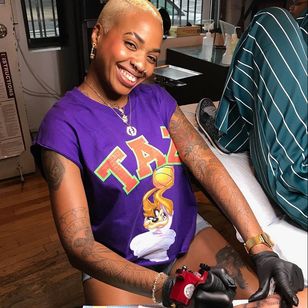
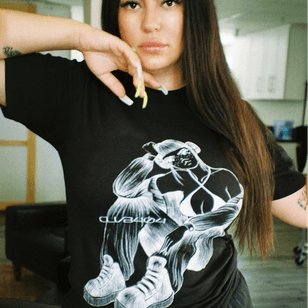
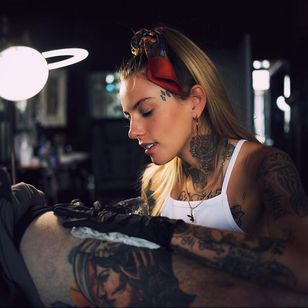
“I prefer to talk about the feelings and the energies that other women spread and that influences me so much. Now you can meet a lot of female tattoo artists and I don’t know if we can still talk about cultural and gender differences? From my point of view, the world of tattooing is a beautiful melting pot and social media platforms are the new boosters of this global community. But I started tattooing seventeen years ago and things were pretty different.
Around 2006 I went to a painting meeting called “amalgamarte”. At that time I was nothing more than an apprentice and didn’t have much experience in the world of tattooing. The women I met there were just a few, compared to the males participants.
Claire Reid, a tattoo artist and painter on the road. At that time, for me, the concept of “on the road” sounded completely weird and fascinating at the same time. I never met her again but I remember she said she was leaving the UK, moving to Australia and then traveingl around the world. I’ll never forget her energy and curiosity. actually she’s still living in Australia.
Maria Grazia Tolino is a real pioneer in Italy. After that meeting, I went a few times to her studio as a guest and she changed my way of working and approach to tattooing. I changed all my machines and supplies. She was so focused on her work taking care of all the aspects like sketching, setting up the tools and tattooing. so devoted to this art and a real professional.
Genziana, I remember she came with some Japanese guys and their look was amazing, completely different from how I was. Colourful, free, full of energy. the same energy she spreads every time I meet her, even for a few minutes during conventions.
This short story is about devotion for this art and positive vibes. So, go to conventions, meetings, go into a tattoo shop and talk with a real tattoo artist and meet them in person. It’s an experience you’ll never regret.”


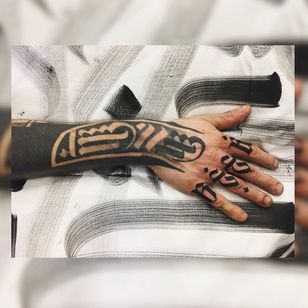
“I feel like its important that womxn, especially womxn of colour, contribute to the tattoo industry because they can give a different perspective on how tattoos are seen and what they mean, especially today within a heavily dominated cis white male industry and also in social media.
I feel as though I try my best to incorporate all skin tones and body shapes and types as best I can within my portfolio. Also, many tattoo shops, and even artists, can make sessions uncomfortable for some and tattooing shouldn’t be like that (racism, discrimination, fat-phobia homophobia, transphobia, sexual harassment, et cetera) Finding a way to make clients feel more at home and comfortable by respecting and setting boundaries when they get tattooed is extremely important. I find tattooing to be a spiritual and ritualistic, for myself and the client. So, establishing a safe space where we respect people for who they are and not crossing any boundaries is a must.
Not many artists see it that way and the politics of the industry can be misleading. It’s not just a job for me to make money or get famous on instagram. I tattoo because I am an artist and I think it’s important to share my art in more ways than one and to make connections with so many diverse people. I feel it’s humbling to meet so many different people and listen their stories. Tattooing is a great way to do that all at once and to hopefully set an example for other tattoo artists.”
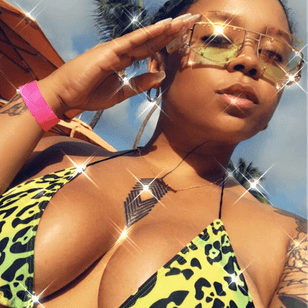
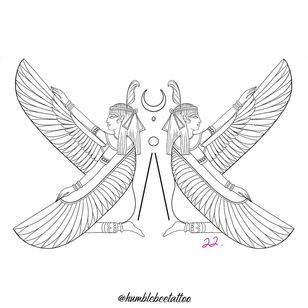

“I don’t think there’s any gender difference in being a tattooist. If you manage your physical strength and ability well, the customer will evaluate it as the worker’s work, not as a gender. That’s the best part. It’s not that social and structural problems are preventing me from developing my abilities. It’s good to develop and be recognized and judged mercilessly only as work. However, it is very welcome that women are able to stand out without discrimination in the male-dominated world of work. This is the result of not only me but also young artist’s steady pursuit of a bright atmosphere, diversity, change and expertise in the genre against the existing dark, gloomy and negative perceptions.
In the meantime, some female tattooists have been very successful in their work. It resonates so much that a lot of female tattooists have sprung up and actually made their debut. They’re showing good work. The perception is that male tattooists can do emotional and detailed work, not just big work. There’s an atmosphere in which men are ignored when they do small things, but now both men and women are able to do tattoo what they want. And these efforts have been made in the last five or six years, young men and women’s guests has been exploded. As the number of tattoos has increased, they have become a culture that anyone can enjoy, not just certain kinds of people.
South Korea is now standing out from the illegal tattoos and the enormous amount of negative culture. I thank all Korean tattooists for their efforts. When I started tattooing 15 years ago, things were quite different. Tattoos were a harsh culture and exclusive to men. Learning tattoos for them was more like surviving. I gave up learning in Korea and went to Australia and Thailand to study by myself. I opened my studio 10 years ago and now I am here. Unlike now, women were in a dismissive mood at the time. In order not to be ignored, I had to create big work and was hurt a lot mentally so I lived without interaction with other workers.
In many cultures, women tend to look bad with tattoos. However, it is a great pleasure to see more female guests change that view. The genre of engraving ranges from small to large roughness. Rather, it is men’s tattoos that still need more change. Men want to do something pretty, beautiful, and lyrical, but they’re tied to the “manly” mold. I’ve seen many cases where the subject matter is limited and they’re hesitant to do it. I think it will change slowly.”
